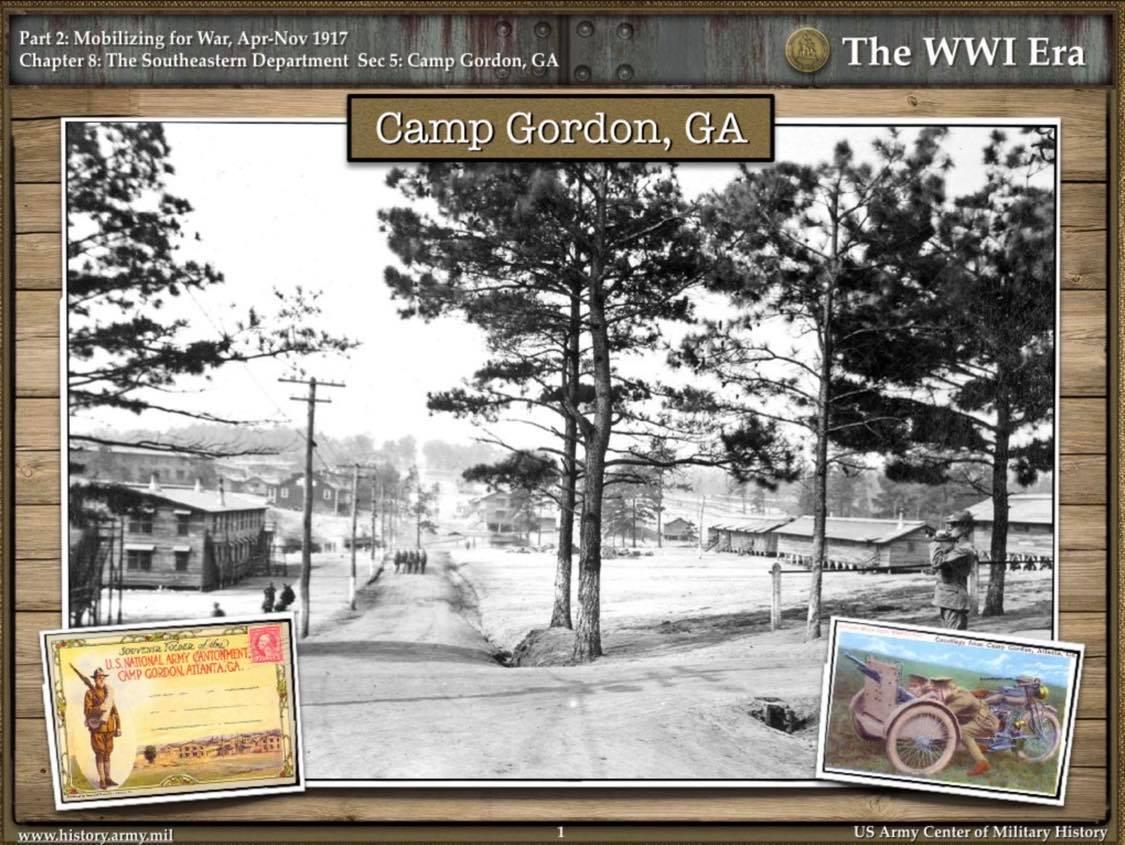
5 minute read
History Corner: Mobilization for War
Mobilization for War CAMP GORDON
APRIL - NOVEMBER 1917
Advertisement





The WWI Era
CHAPTER 8: The Southeastern Department Section 5: Camp Gordon, GA
H
istory: Named in honor of Lieutenant General J. B. Gordon, C. S. A., a native of Georgia, who also served as Governor of the State. Established July 18, 1917, to serve as training camp for 82d Division (N. A.), which occupied the cantonment, August 1917 - April 1918. Construction started June 18, 1917, and continued through 1918. The first inducted men reported September 1 - 15, 1917; the last, December 16-31, 1918. Approximate numbers received from States and other sources: Alabama, 5,097; Florida, 202; Georgia, 45,401; Illinois, 5,168; Iowa, 6,480; New York, 18,700; Ohio, 9,800; Tennessee, 18,649; other camps, 49,687. Designated as infantry replacement and training camp, April 1918, as infantry training center, August 21, 1918, and as demobilization center, December 3, 1918. Sale of real estate and buildings ordered, 1920. Abandoned, September 1921. Descriptions: Temporary training camp, located about 14 miles from Atlanta, in DeKalb County. Facilities - Camp Base Hospital: Opened September 7, 1917. Prior to that date, 4 barrack buildings maned by personnel of F. Hosp. No. 25, were used as camp hospital. Treated all cases arising in camp, and all medical, surgical, and venereal cases from overseas. See p. 265. Infantry Training Center:
Number of replacements sent overseas - 273 officers, 28,922 enlisted men. Officers’ Training Schools: Third Series - in operation, Jan. 5 - Apr. 19, 1918. See pp. 81, 82. Infantry Central Officers’ Training School - In operation, June 1918 - Feb. 1919. See pp. 86, 87. Demobilization Center: Number processed about 116,228. Other Facilities: See p.


678.
Cantonment of 1,435 buildings. Troop capacity - 41,162. Construction cost to June 30, 1919 - about
$11,217,000. Area -
The 82d Division “All-American” Cantonment site proper, 4,672 acres; entire tract, 11,303 acres.
Command Status:
Commanding Officer reported directly to War Department, also exercised jurisdiction of general court-martial till Sept. 24, 1919.
Camp Commanders: 1917 - Aug. 25, Major General Eben Swift; Nov. 25, Brigadier General James B. Erwin (ad interim); Dec 27, Brigadier General. William P. Burnham (ad interim).

Allied officers from France and United Kingdom visited Camp Gordon, Georgia





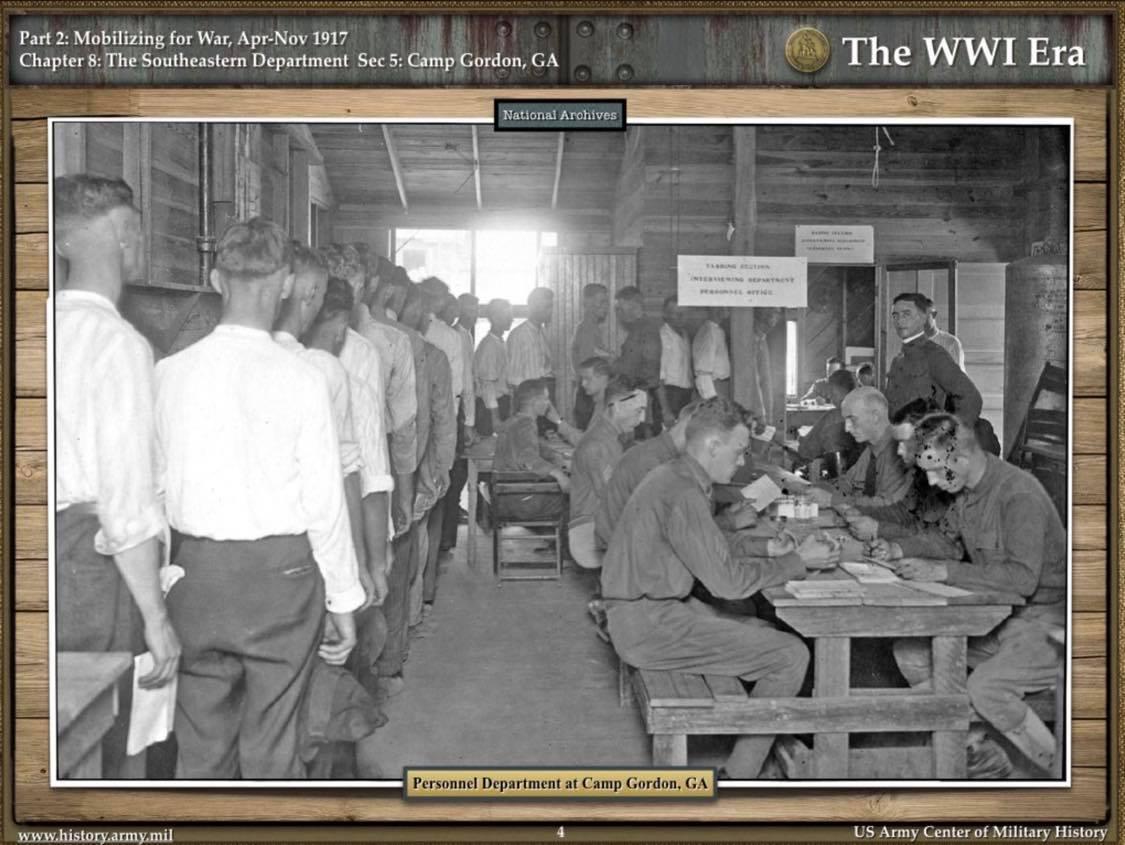
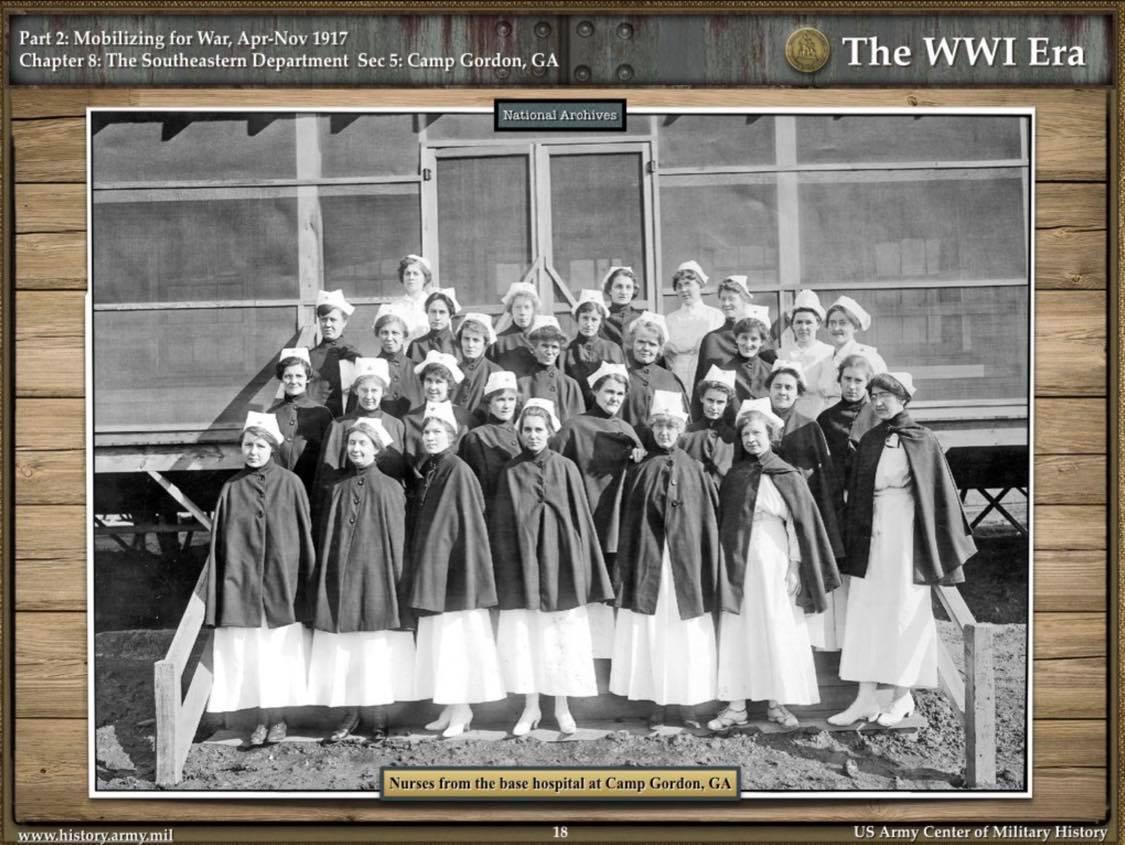
Army nurses assigned to Camp Gordon
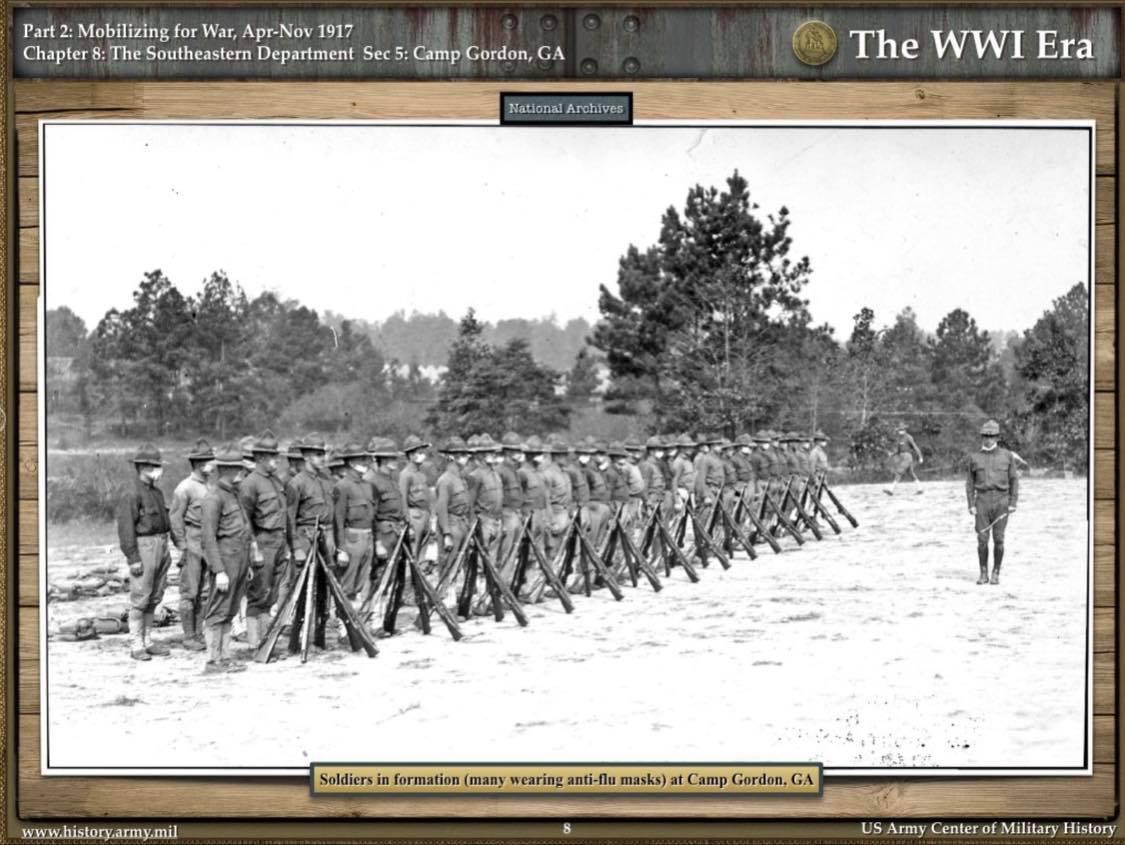



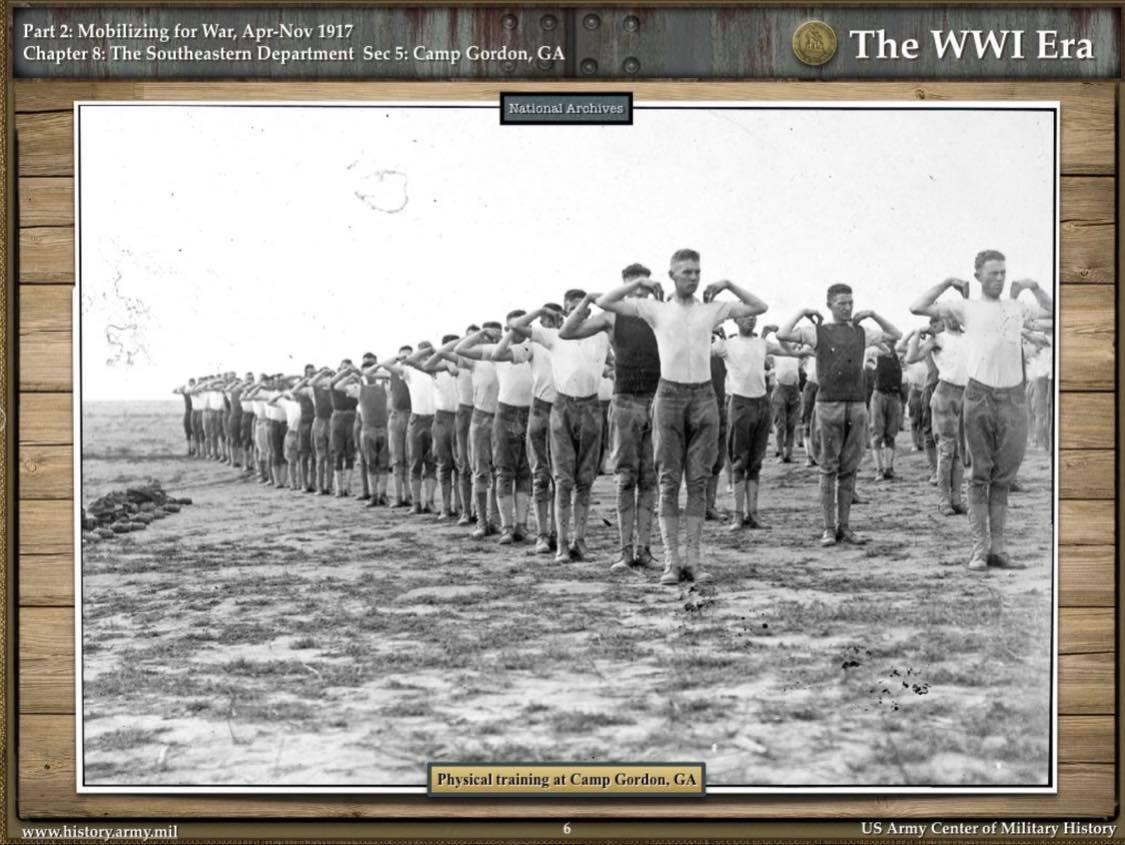
Soldiers conduct physical training
Soldiers information wearing Pandemic mask preventing the spread of Spanish Flu



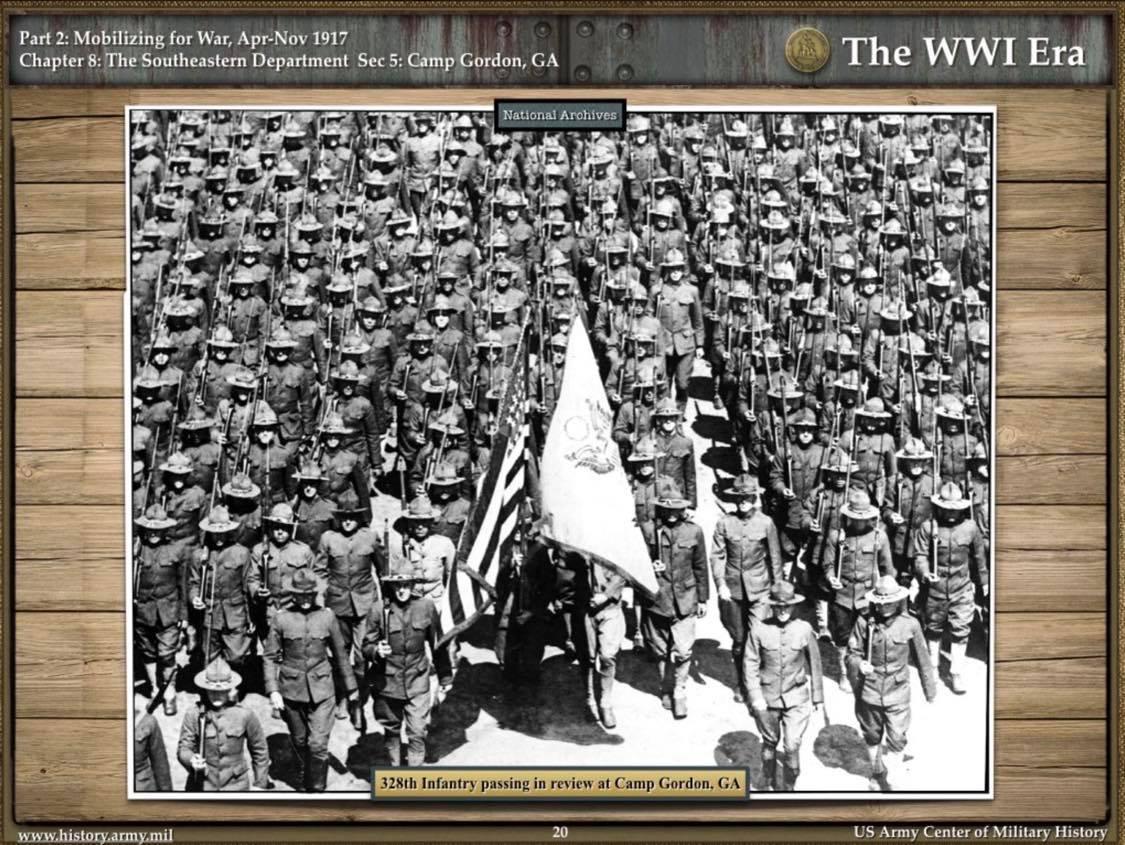
328th Infantry Passing and Review at Camp Gordon, GA



Machine-gun training at Camp Gordon
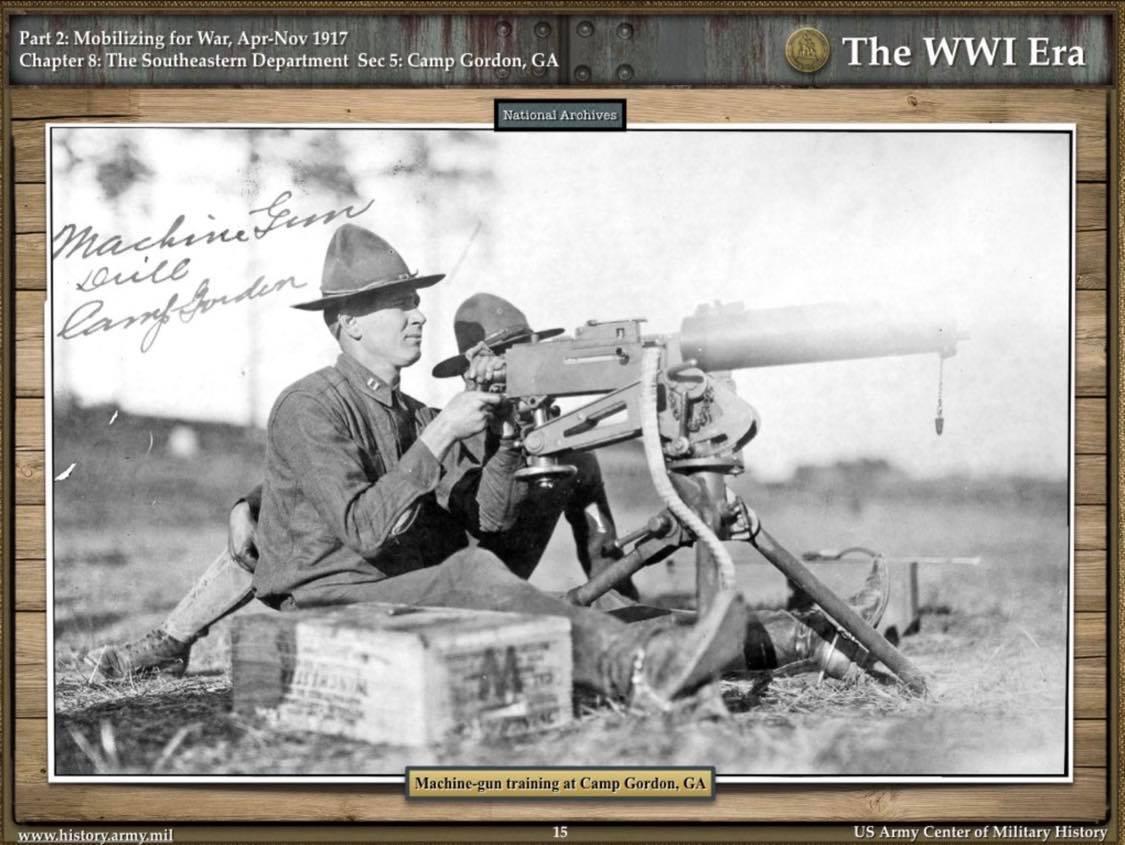



Black recruits report to Camp Gordon
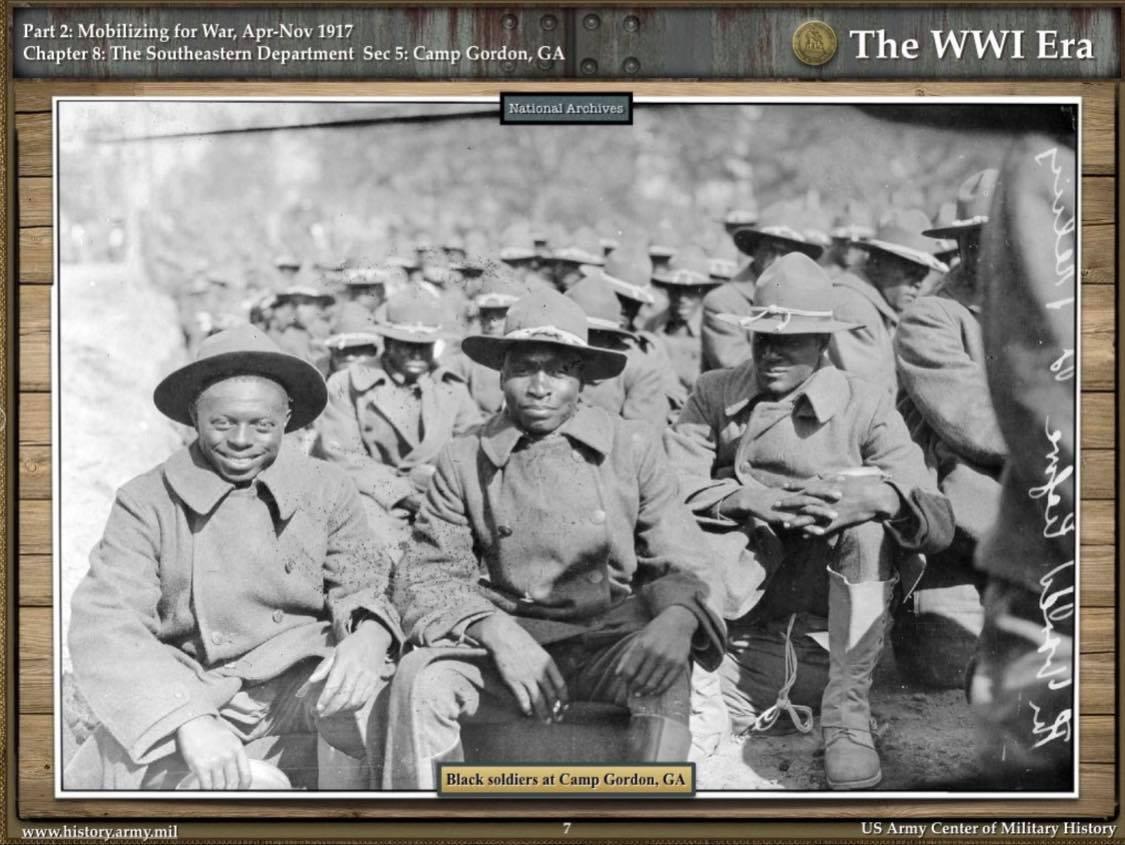
WWII: The Man Behind The Longest Day
Cont. fom page 2
U. S. Army Colonel Darryl F. Zanuck, Signal Corps
sound with the 1927 film The Jazz Singer. He became a studio manager in 1928 and later became chief of production. Zanuck had essentially become the right hand man of Jack Warner in a few short years. Other great hits he produced at the time were Little Caesar (1930) and The Public Enemy (1931). After being denied a share in the ownership of the studio, Zanuck made his next move in the film industry. In 1933 Zanuck became a co-founder of Twentieth Century Pictures. In 1935 the company bought Fox Studios and formed Twentieth Century Fox. He produced The Grapes of Wrath in 1940 followed by How Green Was My Valley in 1941. In 1942 Zanuck was commissioned a Colonel in the Signal Corps. His first assignment was a military observer attached to the American Embassy in London. During this time he negotiated agreements with the British Minister of Information and the Soviet Film Bureau to coordinate information and training films for the Allies. On 19 August 1942 he accompanied Canadian, British, and
American troops on the raid at Dieppe, France. Colonel Zanuck was then sent to the Aleutian Islands of Alaska to supervise the production of the first film of a War Department historical film series for public information. This feature film in technicolor, entitled Report from the Aleutians, won a New York Film Critics award. Colonel Zanuck was next assigned to oversee the production of the second feature film in the historical series, At the Front in North Africa. He organized special photographic detachments to cover the amphibious landings. The film incorporated no staged material or special effects.


